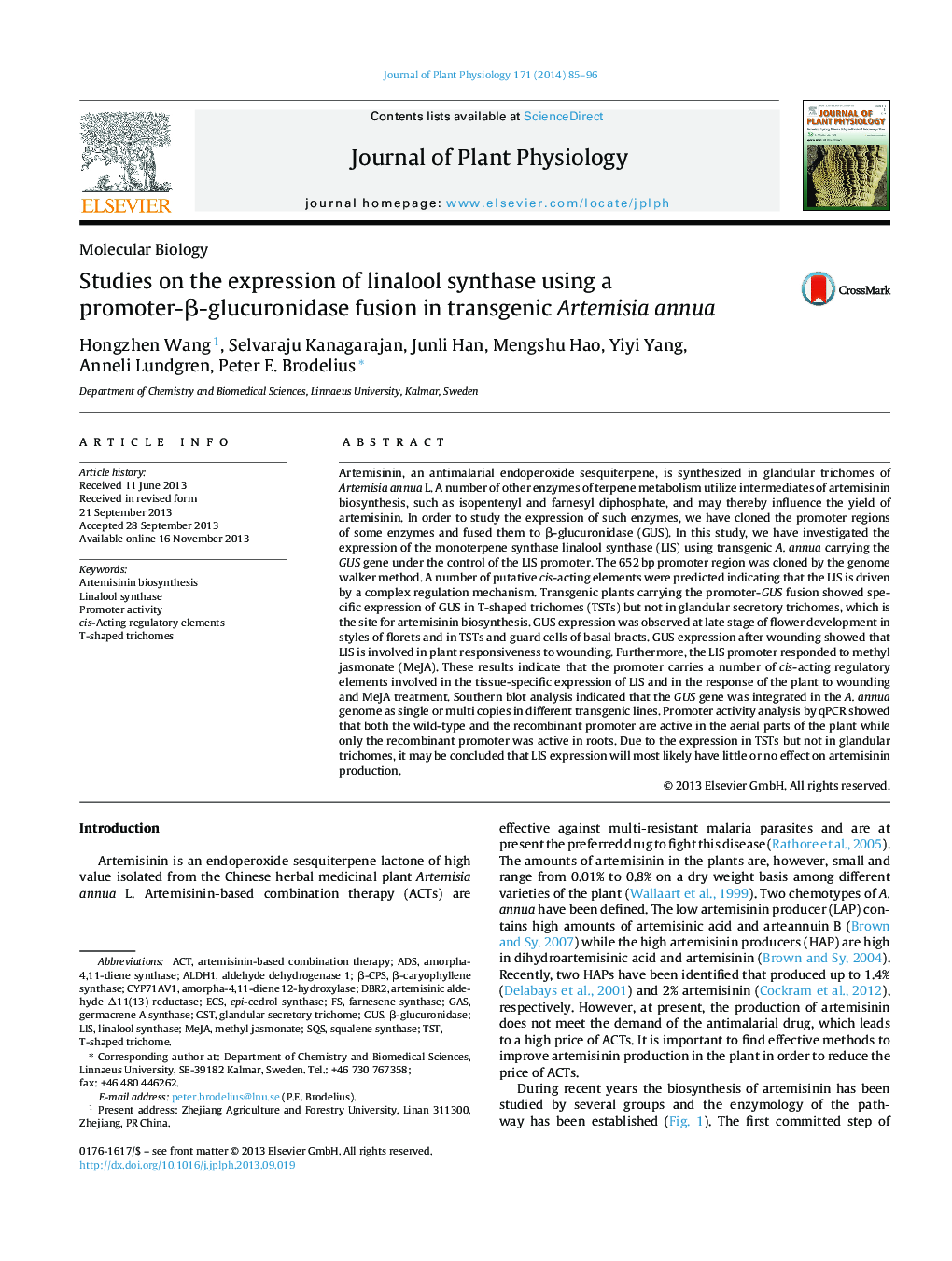| کد مقاله | کد نشریه | سال انتشار | مقاله انگلیسی | نسخه تمام متن |
|---|---|---|---|---|
| 10876915 | 1075787 | 2014 | 12 صفحه PDF | دانلود رایگان |
عنوان انگلیسی مقاله ISI
Studies on the expression of linalool synthase using a promoter-β-glucuronidase fusion in transgenic Artemisia annua
دانلود مقاله + سفارش ترجمه
دانلود مقاله ISI انگلیسی
رایگان برای ایرانیان
کلمات کلیدی
LISDBR2Germacrene A synthaseCYP71AV1cis-acting regulatory elementsSQSTSTGUSACTALDH1ADSGSTECs - EC هاβ-glucuronidase - β-گلوکورونیدازaldehyde dehydrogenase 1 - آلدئید دی هیدروژناز 1amorpha-4,11-diene synthase - آمورفا-4،11-دیئین سنتازsqualene synthase - اسکالن سنتازArtemisinin biosynthesis - بیوسنتز آرتمیسینینartemisinin-based combination therapy - ترکیب آرتامیزینین مبتنی بر ترکیبPromoter activity - فعالیت تبلیغاتیLinalool synthase - لینالول سنتازMethyl jasmonate - متیل جاسموناتMeJA - میاGas - گاز
موضوعات مرتبط
علوم زیستی و بیوفناوری
علوم کشاورزی و بیولوژیک
علوم زراعت و اصلاح نباتات
پیش نمایش صفحه اول مقاله

چکیده انگلیسی
Artemisinin, an antimalarial endoperoxide sesquiterpene, is synthesized in glandular trichomes of Artemisia annua L. A number of other enzymes of terpene metabolism utilize intermediates of artemisinin biosynthesis, such as isopentenyl and farnesyl diphosphate, and may thereby influence the yield of artemisinin. In order to study the expression of such enzymes, we have cloned the promoter regions of some enzymes and fused them to β-glucuronidase (GUS). In this study, we have investigated the expression of the monoterpene synthase linalool synthase (LIS) using transgenic A. annua carrying the GUS gene under the control of the LIS promoter. The 652 bp promoter region was cloned by the genome walker method. A number of putative cis-acting elements were predicted indicating that the LIS is driven by a complex regulation mechanism. Transgenic plants carrying the promoter-GUS fusion showed specific expression of GUS in T-shaped trichomes (TSTs) but not in glandular secretory trichomes, which is the site for artemisinin biosynthesis. GUS expression was observed at late stage of flower development in styles of florets and in TSTs and guard cells of basal bracts. GUS expression after wounding showed that LIS is involved in plant responsiveness to wounding. Furthermore, the LIS promoter responded to methyl jasmonate (MeJA). These results indicate that the promoter carries a number of cis-acting regulatory elements involved in the tissue-specific expression of LIS and in the response of the plant to wounding and MeJA treatment. Southern blot analysis indicated that the GUS gene was integrated in the A. annua genome as single or multi copies in different transgenic lines. Promoter activity analysis by qPCR showed that both the wild-type and the recombinant promoter are active in the aerial parts of the plant while only the recombinant promoter was active in roots. Due to the expression in TSTs but not in glandular trichomes, it may be concluded that LIS expression will most likely have little or no effect on artemisinin production.
ناشر
Database: Elsevier - ScienceDirect (ساینس دایرکت)
Journal: Journal of Plant Physiology - Volume 171, Issue 2, 15 January 2014, Pages 85-96
Journal: Journal of Plant Physiology - Volume 171, Issue 2, 15 January 2014, Pages 85-96
نویسندگان
Hongzhen Wang, Selvaraju Kanagarajan, Junli Han, Mengshu Hao, Yiyi Yang, Anneli Lundgren, Peter E. Brodelius,